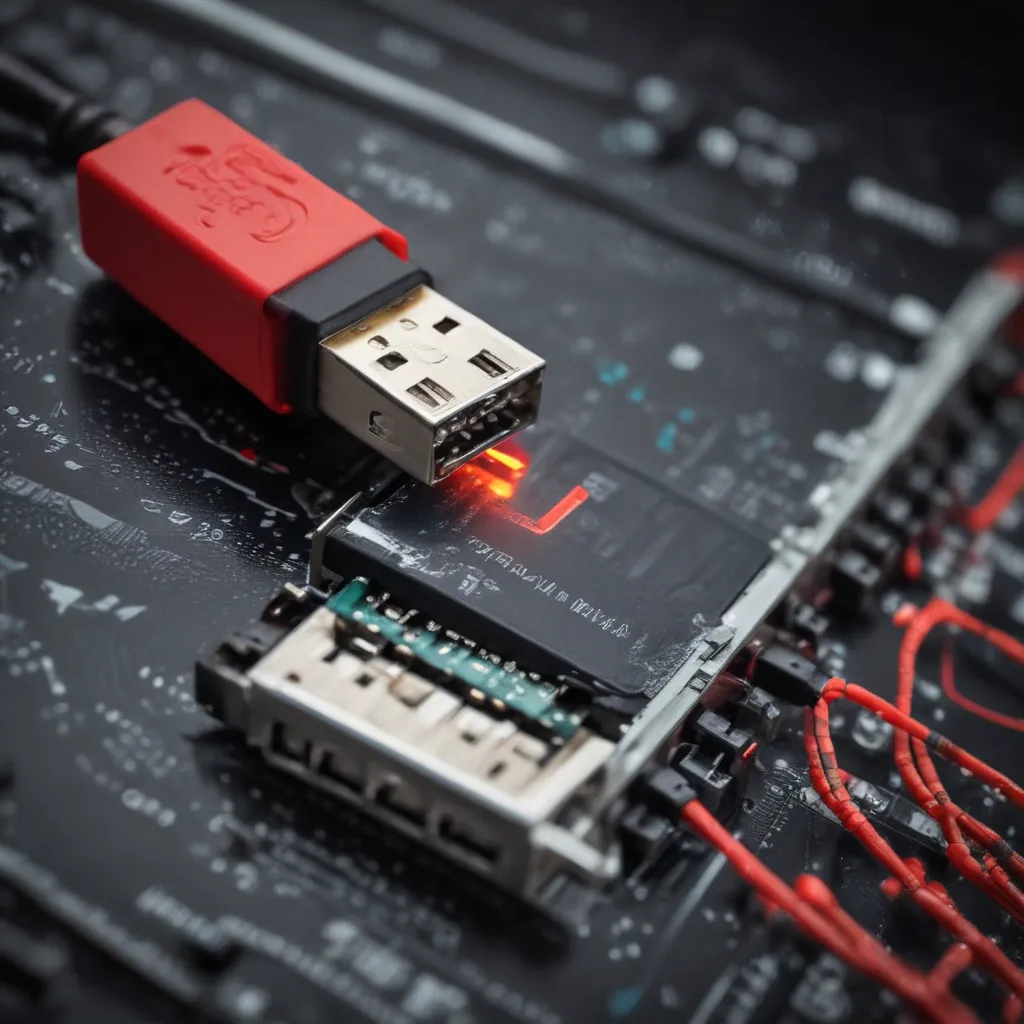The Dangers of USB Connectivity
As a computer repair technician in the heart of the UK, I’ve seen my fair share of malware-infested devices come through the doors. From ransomware-encrypted hard drives to keyloggers stealing sensitive information, the list of digital disasters is enough to make any tech-savvy individual break out in a cold sweat. But you know what’s one of the most common culprits behind these malicious infections? Good old USB.
That’s right, the humble Universal Serial Bus – the means by which we connect our phones, cameras, external drives, and a myriad of other devices to our computers – has become a veritable superhighway for malware. And the scariest part? It’s often an unsuspecting user who unwittingly opens the doors to these digital demons.
The Malicious Masquerade of USB
Let’s dive a little deeper into the dark underbelly of USB connectivity. You see, USB drives, cables, and ports have become the Swiss Army knives of the tech world. They’re versatile, convenient, and frankly, ubiquitous. But therein lies the problem – this ubiquity makes them the perfect vehicle for malware to hitch a ride. [1]
Imagine this scenario: you’re at a conference, and someone hands you a free USB drive, claiming it’s loaded with valuable information. Intrigued, you plug it into your laptop to take a look. Little do you know, that drive is teeming with malicious code, just waiting to unleash its havoc on your system. By the time you realize what’s happened, it’s often too late – your device is infected, and your precious data is held for ransom.
Or what about that USB charging cable you picked up at the airport? Looks innocent enough, right? Wrong. In a technique known as “juice jacking,” those cables can be modified to siphon data from your device the moment you plug them in. [2] It’s a sneaky, sinister way for cybercriminals to gain access to your personal information.
Protecting Yourself from USB Threats
Now, I know what you’re thinking: “But I’m careful! I’d never plug in a suspicious-looking USB drive or cable.” And that’s a great start. But the truth is, malware can be incredibly sophisticated these days, often masquerading as benign or even helpful devices. [3] So, what can you do to protect yourself?
First and foremost, be incredibly wary of any USB device that comes from an unknown source. If you didn’t personally purchase or receive the item from a trusted individual, it’s best to steer clear. And even if it’s from a seemingly reputable source, it’s always a good idea to scan the device with your antivirus software before plugging it in.
Secondly, consider investing in a USB condom – no, not that kind! I’m talking about a USB data blocker, a small device that allows you to charge your gadgets without exposing your data to potential threats. [4] It’s a simple and affordable way to keep your information safe when you’re on the go.
Finally, make sure your computer’s operating system and antivirus software are always up-to-date. Cybercriminals are constantly finding new vulnerabilities to exploit, and software updates often contain critical security patches to address these issues. [5] Don’t ignore those pesky update reminders – they could be the difference between a secure system and a malware-infested nightmare.
The Backup Blitz
But what if, despite your best efforts, you do fall victim to a USB-borne attack? Well, my friend, that’s where the power of backups comes into play. [6]
I can’t stress enough the importance of regularly backing up your data. Whether it’s your cherished family photos, your work documents, or your meticulously curated music collection, losing it all to a ransomware attack would be a devastating blow. So, make sure you have a solid backup strategy in place, whether it’s using an external hard drive, a cloud storage service, or a combination of both.
And don’t just set it and forget it – test your backups regularly to ensure they’re actually working. There’s nothing worse than discovering your backup is corrupt or incomplete when you need it most. [7]
Conclusion: Stay Vigilant, Stay Secure
At the end of the day, USB devices have become an integral part of our digital lives, and we can’t simply avoid them altogether. But by being proactive, staying informed, and taking a few simple precautions, we can significantly reduce the risk of falling victim to USB-borne malware.
So, the next time you’re tempted to plug in that mysterious USB drive or use that “free” charging cable, remember: USB may be the superhighway, but you don’t have to be the unsuspecting traveler. Stay vigilant, stay secure, and keep your data safe from the digital demons lurking in the shadows.
[1] https://www.quora.com/Can-a-USB-cable-carry-virus
[2] https://consumer.ftc.gov/articles/protect-your-personal-information-and-data
[3] https://www.quora.com/Will-virus-from-my-phone-transfer-to-my-PC-through-USB
[4] https://superhighways.org.uk/latest/cyber-security-for-small-chari-2/
[5] https://www.quora.com/I-want-to-transfer-my-music-from-my-Windows-laptop-to-an-iOS-iPhone-through-USB-While-I-transfer-files-will-viruses-transfer-to-the-phone-even-though-I-dont-have-a-virus-in-computer
[6] https://www.linkedin.com/posts/lily-ray-44755615_google-is-apparently-going-to-start-testing-activity-7176978380653740032-z-xx
[7] https://www.wikihow.tech/Avoid-Getting-a-Computer-Virus-or-Worm













